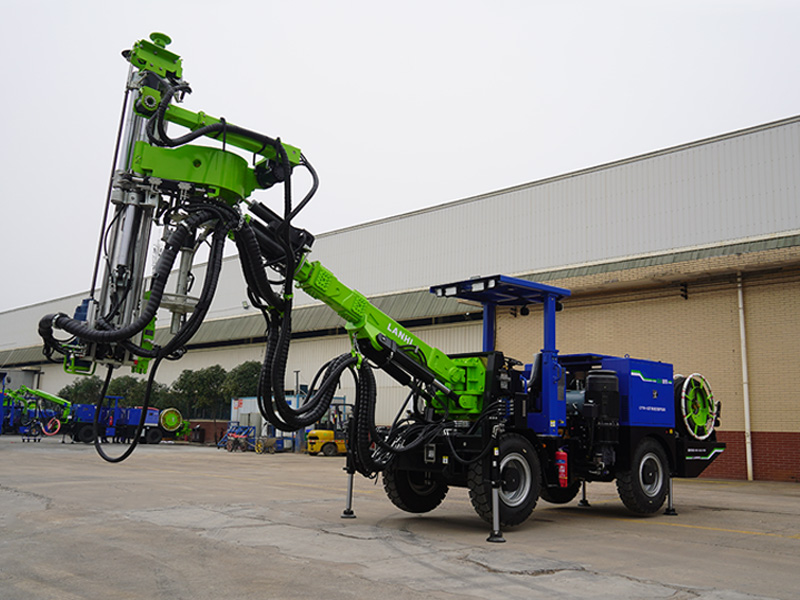What is a Bolting Rig? A bolting rig is a specialized mechanical device used for underground engineering operations, such as in mine tunnels and construction of tunnels. It integrates functions such as drilling and bolt installation, enabling efficient and precise bolt support in complex underground environments.

How a Bolting Rig Works?
When operating, the bolting rig first moves to the designated work location using its chassis. The operator adjusts the working arm to align the drilling system with the position where the bolt needs to be installed. The drilling system is then activated, and the power head drives the drill rod to rotate and penetrate the rock or soil. Once the desired drilling depth is reached, the drilling process is stopped. Next, the bolt installation system pushes the bolt into the drilled hole, securing it firmly, thereby providing structural support.
Uses of a Bolting Rig
1. Bolt Installation
In mining operations, bolts are installed to prevent roof and wall collapses in tunnels. Bolting rigs precisely drill holes in rock surfaces, insert bolts, and secure them using grouting or mechanical anchoring. For example, in coal mine tunnels, bolting rigs can rapidly and efficiently complete bolt installation tasks, ensuring tunnel stability, safeguarding miners' lives, and maintaining smooth mining operations.
In tunnel construction, whether for railway, highway, or water transfer tunnels in hydraulic projects, bolting rigs play a critical role. After tunnel excavation, the rig installs bolts on the tunnel walls to prevent rockfalls and create a safe environment for subsequent lining work.
2. Drilling Operations
Beyond drilling holes for bolt installation, bolting rigs can perform auxiliary drilling tasks. For instance, in mining, exploratory drilling is conducted to assess ore distribution, geological structures, and underground water conditions. Bolting rigs, with their drilling systems, can drill at various angles and depths to extract rock samples, aiding geologists in understanding the mine's geological conditions and devising optimal extraction plans.
During geological surveys before tunnel construction, bolting rigs can also be utilized. They can drill around planned tunnel routes to gather geological data, predict adverse conditions such as faults or cavities, and allow construction teams to prepare in advance, preventing safety incidents and project delays.
Applications of Bolting Rigs
1. Mining Engineering
Bolting rigs play a crucial role in the excavation and support of mine tunnels. They quickly install bolts in tunnel roofs and walls to prevent rockfalls, ensuring tunnel stability and worker safety. In deep mines with complex geological conditions and high rock pressure, bolting rigs efficiently complete support tasks, enhancing mining productivity.
2. Tunnel Engineering
Bolting rigs are indispensable in underground transportation projects like highway and railway tunnels. After tunnel excavation, they are used to support tunnel walls promptly by installing bolts, creating favorable conditions for subsequent lining work and preventing collapses or safety accidents during construction.




